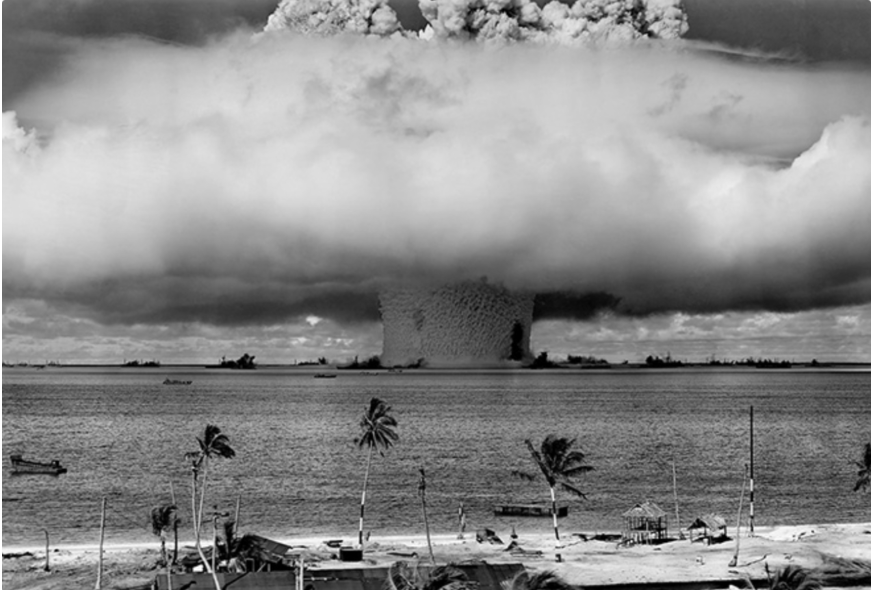-
CENTRES
Progammes & Centres
Location
The onus to defend the nuclear non-proliferation regime and avoid a spiraling arms race lies in Washington’s ability to lead a unilateral effort in working out a sustainable approach to these key challenges.

While the US is seen as the defender of the nuclear non-proliferation regime, current strategies employed by the US government have had a negative impact on sustaining the global nuclear nonproliferation regime. There have been a number of significant developments in recent times that question the efficacy of the non-proliferation order in general. On 2 August, the United States ended its obligations to the Intermediate-range Nuclear Forces (INF) treaty, which had been in place since the Cold War. The renewal of the New Strategic Arms Reduction Treaty (New START) agreement, which is set to expire in 2021, seems unlikely. North Korea has been conducting a series of missile tests and seems to be veering away from denuclearisation talks with the United States. Since the US’ withdrawal from the Joint Comprehensive Plan of Action (JCPOA), tensions between the US and Iran are at an all-time high. The US has adopted a maximum pressure approach on Iran, which has exacerbated the instability in the region, with oil attacks on Saudi Arabia, for example. Along with these developments, automation, machine learning and AI bring in new dynamics to the nuclear non-proliferation regime. All of these appear to be pushing the world in the direction of an accelerated arms race.
The demise of the INF treaty signals the end of the arms control architecture that had been in place since the Cold War.
The INF treaty required the US and the Soviet Union (and subsequently, Russia) to eliminate all nuclear and conventional ground-launched ballistic and cruise missiles with ranges of 500-5,500 kilometers. The demise of the INF treaty has increased strains in an already tense relationship between US and Russia. With the end of the INF treaty, the US Pentagon chief Mark T. Esper also suggested that Washington would be in favour of deploying missiles in Asia. It is important to note that such a move could potentially anger both North Korea and China. The dialogue between the two countries, in the lead up to the withdrawal, saw limited and almost no progress to the point that its demise was inevitable. The demise of the INF treaty signals the end of the arms control architecture that had been in place since the Cold War. Similar nuclear weapons control mechanisms like the New START are further jeopardised with this development and contribute to the possibility of a new nuclear arms race.
Additionally, the New START has been crucial in the significant reduction of both the US and Russian strategic nuclear arsenals. The agreement expires in February 2021 and both stakeholders have suggested that the renewal of said agreement seems unlikely. The US is keen on creating a new agreement that brings China’s nuclear weapons programme under the purview of such a mechanism. The current agreement and its predecessors have governed the strategic capabilities of US and Russia. But China has vehemently criticised the US’ ambitions to govern China’s programme at the same magnitude as Washington and Moscow. Beijing has reiterated the fact that since the scale of its nuclear weapons arsenal is significantly smaller, in comparison to that of US and Russia, it cannot be held to the same standards as the two nuclear superpowers. The US and Russia hold the world’s largest nuclear weapons arsenal and China’s is miniscule in comparative terms. However, certain experts have argued that China’s nuclear weapons programme is rapidly expanding and evolving, which has justified Washington’s eagerness to restrain China’s increasing nuclear ambitions. China’s nuclear doctrine has been shrouded in mystery and the ambiguity surrounding its nuclear ambitions are particularly concerning for the region and the international community. Although, it is important to increase accountability of nuclear powers like China in an increasingly hostile world, the US’ aggressive stance is more likely to push Beijing away from being absorbed into such mechanisms. Rather, it would be more productive to engage Beijing in a multilateral dialogue with other nuclear powers and create a mechanism for accountability, agreed upon by key stakeholders.
Significant stalemates in negotiations and the demise of substantial nonproliferation agreements such as the INF and New START suggest that there is cause for concern.
Additionally, North Korea conducted around seven weapons tests in August. With the inertia in denuclearisation talks between Pyongyang and Washington and the rising regional tensions between North Korea and Japan and South Korea, the pace of North Korea’s nuclear programme is particularly concerning. With Pyongyang’s focus on steadily building and improving its arsenal, the discontent between the two countries is palpable. The US President Donald Trump has been surprisingly silent on Pyongyang’s repeated tests, choosing to ignore any condemnation of North Korea’s activities by other countries. South Korea remarked that at least five of the weapons tests conducted since July have been in direct violation of the United Nations resolutions. Recently, North Korea announced that it was willing to restart talks with the US over the denuclearisation issue. However, hours after the announcement, Pyongyang launched two short-range projectiles in its 8th weapons test since July. Experts argue that North Korea has continued to test weapons in order to leverage the US into adopting a softer stance in the latest iteration of negotiations. Recent history suggests that a tough approach to North Korea has had little positive impact on the prospects of denuclearisation.
Other key developments need to be factored while articulating the future of the nuclear nonproliferation regime, like the US pullout of the JCPOA and the subsequent responses that emerged from Iran. The overriding argument that emerges from the current developments is that the present approach to maintaining the case for nuclear nonproliferation is not working. Significant stalemates in negotiations and the demise of substantial nonproliferation agreements such as the INF and New START suggest that there is cause for concern. Recent developments in the nuclear world order give credence to the argument that the world is at the precipice of a more intense arms race. The international frameworks, whether multilateral or bilateral agreements, in managing nuclear non-proliferation have failed to bring about any restraint in this regard. The number of developments in the nuclear non-proliferation regime in the past couple of years, are, to a certain extent, unprecedented in a post-NPT era. The US has been seen as the defender of the non-proliferation architecture since the end of the Cold War. The US approach in recent years has been one of immense pressure in addressing the challenges in an effort to uphold the non-proliferation regime. But as evidenced above, these have only aggravated regional tensions. The onus to defend the nuclear non-proliferation regime and avoid a spiraling arms race lies in Washington’s ability to lead a unilateral effort in working out a sustainable approach to these key challenges.
The views expressed above belong to the author(s). ORF research and analyses now available on Telegram! Click here to access our curated content — blogs, longforms and interviews.

Pulkit Mohan is the Head of Forums at ORF. She is responsible for the ideation curation and execution of ORFs flagship conferences. Her research focuses include ...
Read More +